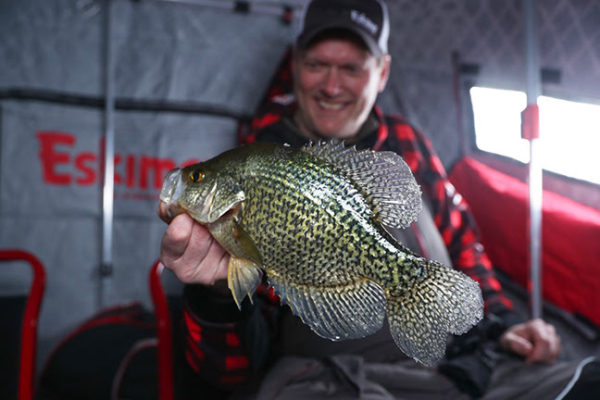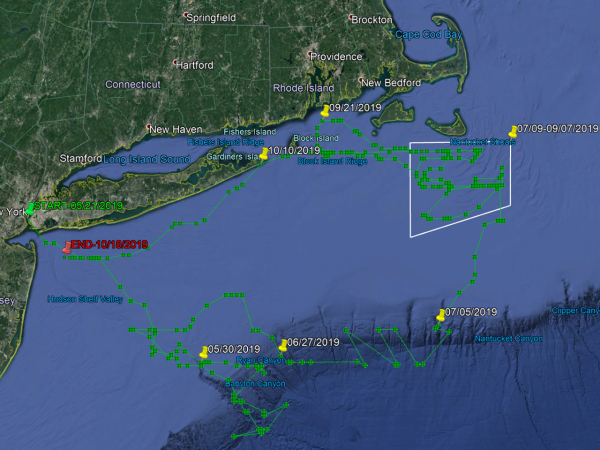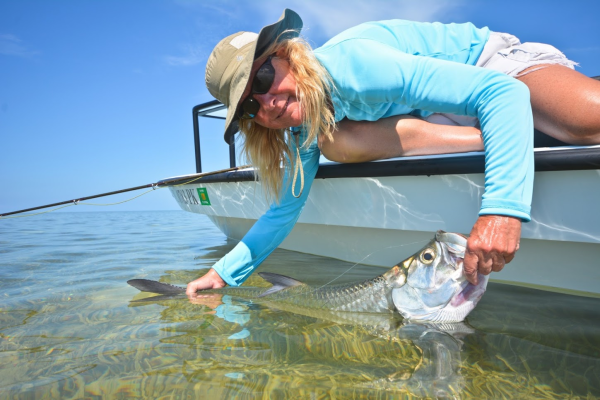March Bass at Jackson Lake
with Barry
Stokes
For many years Jackson Lake was known for its big bass. Then spots got into the lake and it seemed
the big lunker largemouth got very rare, but you could catch a pile of keeper
size spots. Stringers with several six
to eight pound bass are not seen like they were years ago, but 20 pound
tournament catches still happen.
Filled in 1911, Jackson is the oldest big reservoir in the
state. This Georgia Power lake on the
headwaters of the Ocmulgee River covers 4750 acres and its shoreline is lined
with cabins, docks, rocks and wood cover.
Most of its channels are silted in but there are plenty of sandy
spawning coves on the lake.
Barry Stokes grew up near Jackson and fished farm ponds but did
not get to fish Jackson much. He watched bass boats go by his house headed to
the lake and was determined someday to be in a bass boat on Jackson like those
guys. He made those wishes come true in
the early 1990s and joined the Conyers Bass Pros bass club. Later he joined
Bear Creek Bass Club.
In the past 15 years Barry has learned the lake well and,
starting in 2001, fished as many pot tournaments on it as he could. He fished
the old R&R, Dixie Bass and Charlie’s Bait and Tackle trail as well as the
night and weekend pot tournaments on Jackson. Now he fishes the Berry’s trail,
ABA, and any other tournaments on the Jackson.
He also fishes the BFL, HD Marine and other tournaments on Sinclair and
Oconee. He is usually waiting around on a check after weigh-in in them.
Barry has learned the lake so well he now guides on Jackson as
well as Sinclair and Oconee. He knows
how to pattern the bass on the lake and has learned how to catch them. His best
day ever on Jackson he landed a 12 pound lunker and had five fish weighing 30
pounds. In one string of tournaments he
won 11 of 13 tournaments and had big fish in all 13.
Over the years Barry has figured out good patterns for March
bass. In late February they start
staging on rock, clay and sand points near spawning coves and feed up on
crawfish and baitfish. He can usually
catch them four to eight feet deep on those points.
As the water warms during March Barry follows the bass from the
points back into the spawning pockets. Some bass will bed in early March if the
water temperatures go up and stay stable for a week and bass move into the
bedding areas in waves all spring. There
will often be a lot of pre-spawn fish on the points, some moving back and even
some on the beds this month.
“Details are the key,” Barry told me. He keeps a variety of baits tied on and also
has others ready to try. He will vary the details like lure color, depth and
speed he retrieves them all during the day until he finds the key. If the fish
quit hitting he will start varying the details again until he unlocks the new
pattern. Barry will
have several kinds of crankbaits in different colors, a Ol Nelle spinnerbait, a
Net Boy Jackson Jig and pig, a Net Boy Shaky Head, a Terry Bowden’s Cold Steel
lizard worm and a Cold Steel Walking Stick all rigged and ready when he heads
out this month. The colors will vary
with water color, with brighter colors for stained water and more natural
colors for clearer water. But he will
vary all the details during the day.
One of the details Barry pays attention to that many bass
fishermen get lax on is speed he works the baits. He will vary his speed until he hits what is
working. Too many bass fishermen have a speed of retrieve they are comfortable
with when using certain baits and don’t very it. Barry constantly changes.
As the water
warms the fish will get more active this month and chase a bait better, but
some cold days they want a fast moving bait, too. As a general rule you should fish slower in
cold water and faster in warmer water, but Barry says pay attention to details
and vary your speed constantly.
Barry and I
fished the following ten spots in mid-February and bass were already on
them. We caught 20 to 25 bass that day
and Barry caught almost all of them on crankbaits, but I managed a few of the
bigger fish on a jig and pig. These
spots will pay off all month long as fish move up on them then move back to
spawn.
1. N 33
25.195 – W 83 49.875 – Run up the Alcovy to the cove on the left called “Parker
Neck” and look at the upstream point.
There is a small concrete piling/pier on the up stream side right on the
edge of the water and a blowdown runs out off the end of the point. The house on the point is brick half way up
with green wood above it.
This point is
an excellent staging area. The bottom is rocky and the pocket on the downstream
side, Parker Neck, is a good spawning place.
Fish hold out on the point on the rocks and in the blowdown feeding then
move into the cove to spawn as the water warms.
Barry starts
out on the end of the point at the blowdown and fishes the tree and the rocks
with a crankbait, spinnerbait and jig.
He will then work the bank going downstream all the way past the cut to
the next point with a gazebo on it. Fish
the above baits but also try a shaky head worm, and a Texas or Carolina rigged
Lizard Worm along this bank. Work the sand where the bass will be bedding.
2. N 33
24.301 – W 83 49.746 – Headed downstream Price Neck is on your right and a good
rocky point is on your left. The point you want to fish has a small cabin on it
with lattice work around the crawl space.
There is a white painted tire laying in the yard. Back in the pocket on
the downstream side there is a house that runs right to the water’s edge.
This point
runs out shallow toward the downstream side and there is some brush on the
downstream side. The bass spawn in the
cut on the downstream side. Stay way out
and fish a crankbait, spinnerbait and jig around the rocks and brush, then work
into the pocket with the other baits. Try to vary your colors and speed until
you find what the bass want.
One trick
Barry uses is to Texas rig a Cold Steel Walking Stick, a Senko like bait, and
fishes it around all the cover in the pockets. It skips under docks well and
has a little different action and look than the jig and pig that most anglers
will be throwing. This is another example of the types of details Barry uses to
catch bass behind other fishermen.
3. N 33
23.035 – W 83 50.279 – Downstream of the bridge and Berry’s there is a point on
your left heading downstream that has a beige house with a brown roof on it.
There is a three globe light pole in the yard and a dock on the point with a
deck on the bank. The deck has lattice panels around it. There are big rocks on
the point and the bass spawn in the pocket on the upstream side.
Barry says
this is a numbers game point. Spots stage and spawn here and you can often pick
up several fish. Crank the point then
try a spinnerbait. Start on the downstream side and parallel the point fishing
from near the bank casting out toward the lake. Then work out around the point
fan casting both baits. It gets real
shallow on top so don’t get in too close.
After working
the point work into the spawning area dragging a worm on the bottom. Barry
likes a green pumpkin Lizard Worm this time of year and dips the tail in JJs
Magic chartreuse dye to give it some color. Spots seem to especially like the
wiggling chartreuse tails.
4. N 33
22.225 – W 83 51.113 – Go under the power lines and you will see a swimming
beach and picnic area for Turtle Cove on your left. There are three buoys in
front of the beach and the point that runs out downstream of it is a good
staging area. The point is red clay and rock, an excellent combination for
holding bass this time of year. They are
often feeding on crayfish on this kind of point.
The point
runs at an angle downstream across the mouth of a cove. Start near the swimming area where the sand
transitions to clay and rock. That kind of change often holds bass. Work it
then keep your boat way our and go downstream, fan casting around the
point.
There is a
real good drop on the inside of this point where the small creek coming out of
the pocket runs by it. Fish that drop and the blowdown on the inside of the
point. Flip a jig in it and work a
spinnerbait through it. Then work on
into the creek for spawning bass. This
is an excellent spawning area and holds a lot of bass.
5. N 33
22.044 – W 83 51.376 – Go past the next cove downstream and you will head
straight in to a high bluff bank. The
old river channel swings in right by it and it drops off fast. There are three
small points along this bluff bank you should fish in March. Start on the outside one at the dock on the
rock sea wall in front of the series of decks running up the hill to the
house.
It is rocky
and holds the first transitioning fish coming up out of the river channel. Stay
out and fan cast it then work toward the next dock. There is a rock ledge that
runs out under the dock. You will see the dock with a walkway that runs behind
a tree leaning out. The dock has the
numbers “3108” on the walkway.
Stay out from
the dock on the downstream side and cast toward the walkway and tree. You can
see how the rocks run parallel to the bank coming out. Run a crankbait,
spinnerbait and jig along these rocks, then work around the dock and fish the
other side. Also drag a plastic bait along the bottom here.
The next
point going into the creek is a round clay point and you should fish all around
it, then fish into the creek, concentrating on any sand you come to. The Lizard Worm is a good choice on sandy
spots since spawning fish will hit it.
You may not see the bed but can catch fish off the beds with this bait.
6. N 33
22.202 – W 83 51.771 – Round the point headed into the South River and you will
see a sharp narrow point on your right.
It comes out and drops off fast on both sides but is shallow on top.
There is no house on the point but you will see four benches on it and there is
a concrete boat ramp on it. There are
two pines on the point with black protectors around their bases.
The point is
rock and clay and bass spawn in pockets on both side of it. It is steep and
gives bass quick access to shallow water. They can hold deep and quickly move
shallow without moving far.
Start on the
downstream side and work around the point, staying way out. Fish along the
upstream bank leading into the next pocket up. Rocks, clay and sand along this
bank hold bass and they will move along it feeding and working into the
spawning pocket. Barry will usually stop fishing about where the seawall starts
unless he is going back into the pocket for spawning bass.
7. N 33
22.294 – W 83 61.856 – The next point up also has good deep water access. This point has a brown cabin and there was a
US flag flying on the dock in front of it when we were there. There are two floodlights on a tree right at
the dock. There is a big blowdown on the upstream side and a rockpile out on
the point.
The wind can
be important here and on other spots this time of year. Some wind blowing across
the point or into it helps and Barry will fish wind-blown points as long as he
can hold his boat on them. Wind creates
current that moves the food baitfish eat and they will follow it. Bass wait on
the baitfish.
Start at the
blowdown and fish it. Then get out about even with the flag pole and cast
across the point, aiming your casts parallel to the bank toward the cove. You will hit some rocks on this point and
that is where a school of bass will often hold.
The
downstream pocket is full of wood and a good spawning area. Especially near the
end of the month Barry will fish into it, running his Ol Nelle spinnerbait
along the wood. He likes a double Colorado blade bait with white skirt,
especially in clearer water, but will go with double willow leaf and chartreuse
and white skirt in stained water. He
will also flip a jig around the wood before leaving.
8. N 33
21.446 – W 83 51.763 – Head back down the river and it will narrow down.
Straight ahead you to the right you will see a pink house with tin roof on a
flat point that runs out upstream of a bluff point. There is a green picnic
table in the front yard.
Get on the
downstream side of the point and cast in toward the seawall. The bottom is very
rough here and often holds a lot of bass. Fish this bank into the pocket,
working the dock and fishing to the boat ramp. Be sure to his this boat ramp
and any others you come to before leaving.
9. N 33
21.393 – W 83 51.391 – The lake opens up just at this point and the far left
bank going downstream has a creek coming out. In the mouth of this creek is a
hump that is marked with three danger buoys.
It is deep on both sides and bass stage on this hump before going in to
spawn.
Barry likes
to stay out on the lake side and cast up onto the hump, bringing his baits back
shallow to deep. Wind often blows in here and makes it better. There are rocks and clay on this hump and
you should fish all the way around it before leaving. Try all your baits in
different colors and speeds. Assume the bass are here and you just have to
figure out the details to get them to hit.
10. N 33
22.047 – W 83 53.882 – For something a little different run up Tussahaw Creek
under the bride on up to the last pocket on the right before the weekend “no
wake” section. You will see a green metal roof dock in front of a brown house.
There is a little narrow point here downstream of two small pockets. The point
has a cross tie seawall and a big Pampas Grass clump on it. Downstream of the
point you will see a white cabin with a red roof just past a blue cabin.
There are
some stumps on this clay point and the bass will stage on it. Fan cast all around this point and try all
your baits here. The water is often clearer in the Tussahaw so you may need to
change colors to draw strikes.
These are
some of the places Barry will be fishing this month. They will pay off for you,
too. Barry has caught a lot of bass off
all of them and gives credit to Jesus Christ, his lord and savior, for his
successes.
Call Barry at
770-715-2665 for a guided trip on Jackson, Sinclair and Oconee or visit his web
site at www.barrystokesfishn.com. You can see Cold Steel products at www.teamcoldsteel.com/, JJ’s Magic at www.jjsmagic.com/ and
Net Boy Jackson Jigs at www.netboybaits.com/.



